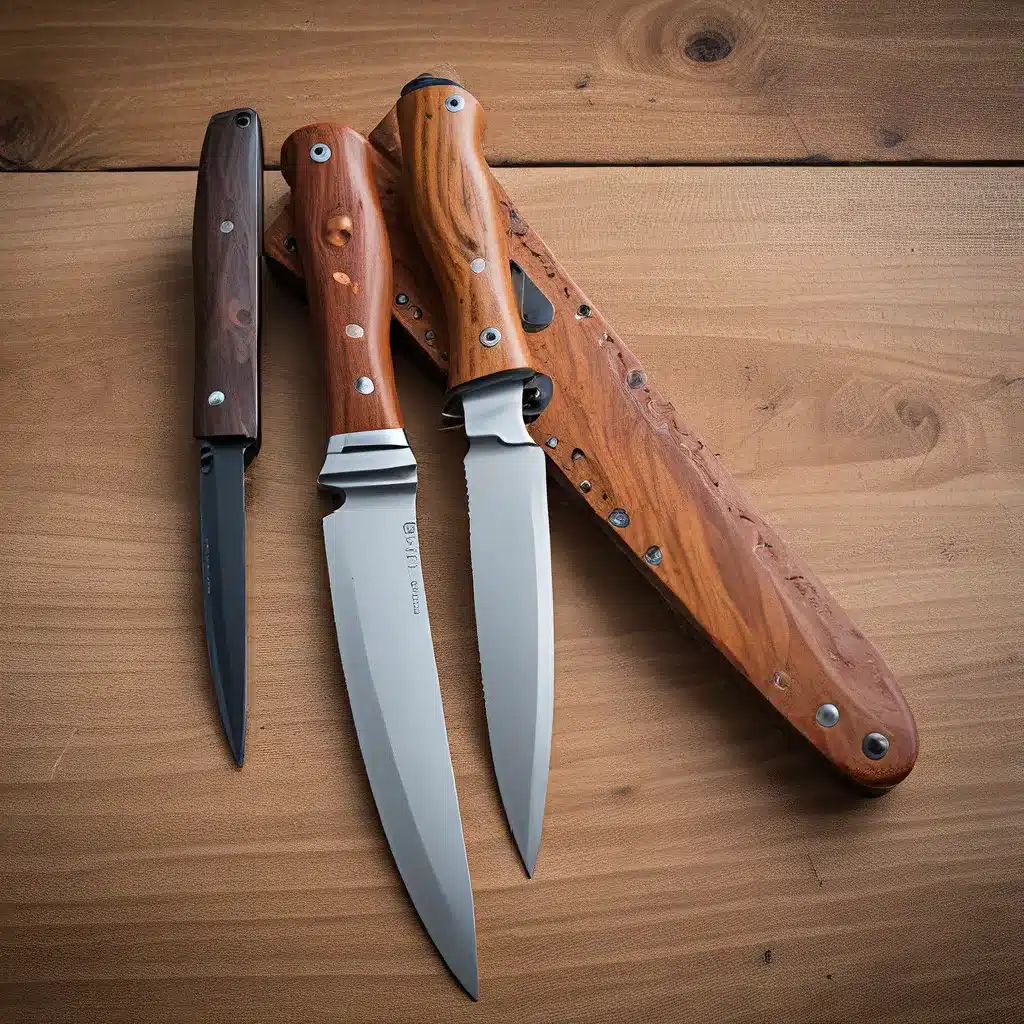
Navigating the Murky Waters of Knife Carry Laws
As an avid EDC (Everyday Carry) enthusiast, I’ve always been fascinated by the world of pocket knives. These compact, versatile tools have become an integral part of my daily routine, accompanying me on adventures and tackling a myriad of everyday tasks with ease. However, the legal landscape surrounding knives can be somewhat of a minefield, with varying regulations across different states and municipalities.
Let’s dive in and explore the cutting-edge of knife laws and trends, so you can stay on the right side of the law while enjoying the convenience and utility of your trusty EDC blade.
Understanding the Legality of Knives
The legal status of knives can be a tricky topic, as it varies widely from one location to another. What may be perfectly acceptable in one state could be considered a felony in another. It’s crucial to familiarize yourself with the specific knife laws in your area before venturing out with your EDC.
Some common types of knives that often face legal scrutiny include switchblades, butterfly knives, and assisted-opening knives. These types of blades have historically been associated with criminal activity, leading to their legalization or restriction in different parts of the country.
However, the tide seems to be turning, with a growing number of states moving towards decriminalization and legalization of these once-taboo knife types. Interestingly, this shift in legislation has been largely driven by the EDC community and its advocacy for the practical and recreational uses of these tools.
The Rise of EDC Culture and Its Impact
The EDC movement has been gaining momentum in recent years, with more and more people embracing the concept of being prepared for everyday tasks and emergencies. This has led to a surge in the popularity of pocket knives, as they are seen as essential components of a well-rounded EDC kit.
One of the driving factors behind this trend is the versatility of EDC knives. These compact, high-quality tools are designed to tackle a wide range of everyday chores, from opening packages and cutting ropes to preparing food and even basic self-defense. The allure of always being “ready for anything” has captivated the hearts and minds of consumers, fueling the growth of the EDC industry.
However, the rise of EDC culture has also brought about legal challenges. As more people carry knives for everyday use, law enforcement and lawmakers have had to grapple with the balance between public safety and individual rights. This has resulted in a patchwork of knife laws across the country, leaving many EDC enthusiasts uncertain about the legality of their beloved tools.
Navigating the Legality of EDC Knives
Staying on the right side of the law when it comes to EDC knives is of utmost importance. The last thing you want is to find yourself in legal trouble over a simple tool that you use daily. To avoid any unwanted encounters, it’s crucial to research and understand the knife laws in your area.
Some key factors to consider when choosing an EDC knife include:
- Blade length: Many states have restrictions on the maximum length of a knife blade, often ranging from 2.5 to 4 inches.
- Blade type: Certain blade styles, such as switchblades and butterfly knives, may be prohibited or subject to specific regulations.
- Concealment: Some areas have laws regarding the visibility of your knife, with some requiring it to be openly carried.
It’s also important to note that the legal landscape can change over time, so it’s a good idea to stay up-to-date on any updates or revisions to knife laws in your region.
The Future of Knife Laws and EDC Trends
As the EDC community continues to grow, the debate over knife laws is likely to intensify. Advocates for decriminalization and legalization will likely push for more permissive legislation, while those concerned with public safety may argue for tighter restrictions.
One potential trend to watch out for is the increased adoption of mechanical folding knives, which are often seen as a compromise between the functionality of traditional pocket knives and the legal status of more contentious blade types. These knives, which typically feature a locking mechanism and a non-automatic opening action, may become more prevalent as a way for EDC enthusiasts to navigate the legal landscape.
Additionally, the ongoing research and development in the knife industry may lead to the creation of innovative designs that push the boundaries of what is considered legal. As new technologies emerge, lawmakers will be faced with the challenge of keeping up with the rapidly evolving landscape of EDC knives.
Embracing Responsible EDC Practices
Regardless of the legal landscape, it’s important for EDC enthusiasts to embrace responsible knife ownership and usage. This means understanding the laws in your area, using your knife for its intended purposes, and always prioritizing safety and respect for others.
By staying informed, being a responsible knife owner, and advocating for common-sense legislation, we can help shape the future of EDC and ensure that these versatile tools remain accessible to those who appreciate their utility and practicality.
After all, as the old saying goes, “with great power comes great responsibility.” And when it comes to the world of EDC knives, that responsibility is paramount.
So, fellow EDC enthusiasts, let’s continue to explore the cutting-edge of knife laws and trends, while always keeping safety and legality at the forefront of our minds. The future of our beloved pocket knives may depend on it.


